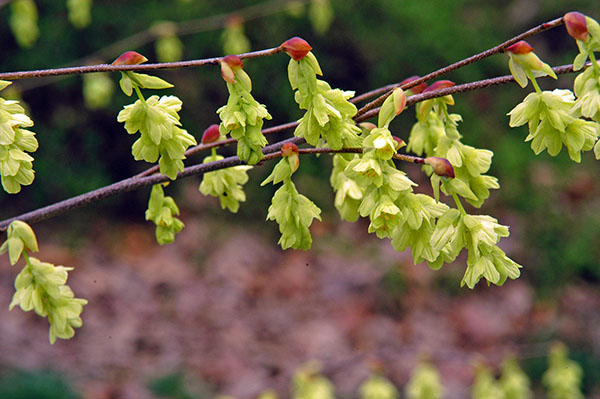Corylus avellana
European Filbert
Europe, western Asia, and northern Africa
Often dense, suckering shrub although can be a small tree.
Full to part sun, moist, fertile, well-drained soils.
Woodland edges, masses, shrub borders.
Alternate, simple 2 to 4 inches long, 1.5 inches to 3 inches wide. Suborbicular to broad ovate, double serrate and slightly lobate margin, acuminate apex an
Buds are imbricate ovoid rounded glabrescent with ciliate scales. About .33 inches long. Green to brown.
Light gray-brown, smooth. Brown glandular stems.
Monoecious flowers bloom in early spring; females are inconspicuous, males are yellow-brown catkins 2-3 inches long.
Involucre shorter or slightly longer than nut.
Seed, cuttings, grafting, or tissue culture.
'Contorta' - Contorted branches and curling leaves.
'Rosita' - Red foliage.
'Rote Zeller' - Purple leaves, pink catkins.
'Pendula' - Weeping.






